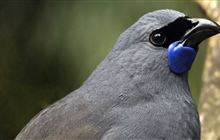Lull in forest seeding after last year’s mast
Archived content: This media release was accurate on the date of publication.
Introduction
DOC monitoring shows New Zealand’s forests are having a lull in seeding after last year’s mega mast, which will lead to fewer predators in some areas.Date: 21 May 2020
Beech and some other forest trees seed every 2-6 years in what is known as a mast. The mass seeding feeds our native species but also fuels a rodent boom and upsurge in stoats, which has devasting impacts on our native wildlife if not controlled.
DOC uses climate modelling to predict forest masts a year ahead, then monitors the following summer to check if seed is present. Along with predator monitoring, this information is important for predator control planning.
Recent seed sampling results confirm there is no significant beech forest mast this year, as forecast, says DOC Principal Science Advisor Graeme Elliott.
“We finished seed sampling in March before the COVID-19 lockdown and results show there is little or no beech seed across the South Island and only a moderate mast at several North Island sites.
“Rimu sampling also showed very little ripe fruit and new tips indicating no rimu mast this year or next.”
DOC’s latest modelling using climate data from the past two summers also indicates there will be no major beech mast in 2021.
“After the massive beech and rimu mast last year, our forests are conserving resources and taking a break from widespread seeding. This means we’re likely to see fewer rats and stoats in many areas and can refocus our predator control plans accordingly,” says Graeme Elliott.
DOC’s seed sampling involved snipping branches by helicopter from beech and rimu trees at selected sites throughout the country. More than 1100 beech trees and 600 rimu trees were sampled at 46 sites. Only sites in the Kaimanawa and Kaweka forest parks showed moderate seed present.
NIWA provides DOC with data from its virtual climate station network and this is used in the Delta-T model to predict beech masts, which appear to be triggered by a significant temperature increase between consecutive summers.
Modelling predicts seeding is unlikely in most of New Zealand’s beech forests in 2021 except in the northern tip of the South Island and north of Lake Wakatipu in Otago where some seeding is possible.
With no major forest mast occurring this year, DOC is planning its Tiakina Ngā Manu predator control programme over about 550,000 ha of conservation land, which will include North Island areas that missed out on predator control in last year’s largely South Island mast response programme.
The national programme is focussed on protecting the most at-risk populations of native species such as kōkako, kiwi, kākā, kea, whio/blue duck, kākāriki karaka/orange-fronted parakeet, mohua/yellowhead, tuke/rock wren, long and short tailed bats/pekapeka, frogs/pepeketua and giant land snails. It is also aimed at protecting native forests from the impact of possums.
Background information
Beech is New Zealand’s dominant forest type. Two thirds of our native forests have some beech (4 million ha) and one third is pure beech (2 million ha). Beech trees can produce millions of seeds, which fuel a rapid growth in rodent populations, followed by an explosion in stoat numbers the following summer. Rat numbers generally remain at low levels in beech forests between masts.
Rimu is New Zealand’s most common native conifer and is found throughout the North Island and in lowland South Island forests, particularly on the West Coast. Its fruit and seeds take 15 months to mature after fertilisation and are an important food for birds, which disperse the seed throughout the forest.
Contact
For media enquiries contact:
Email: media@doc.govt.nz


